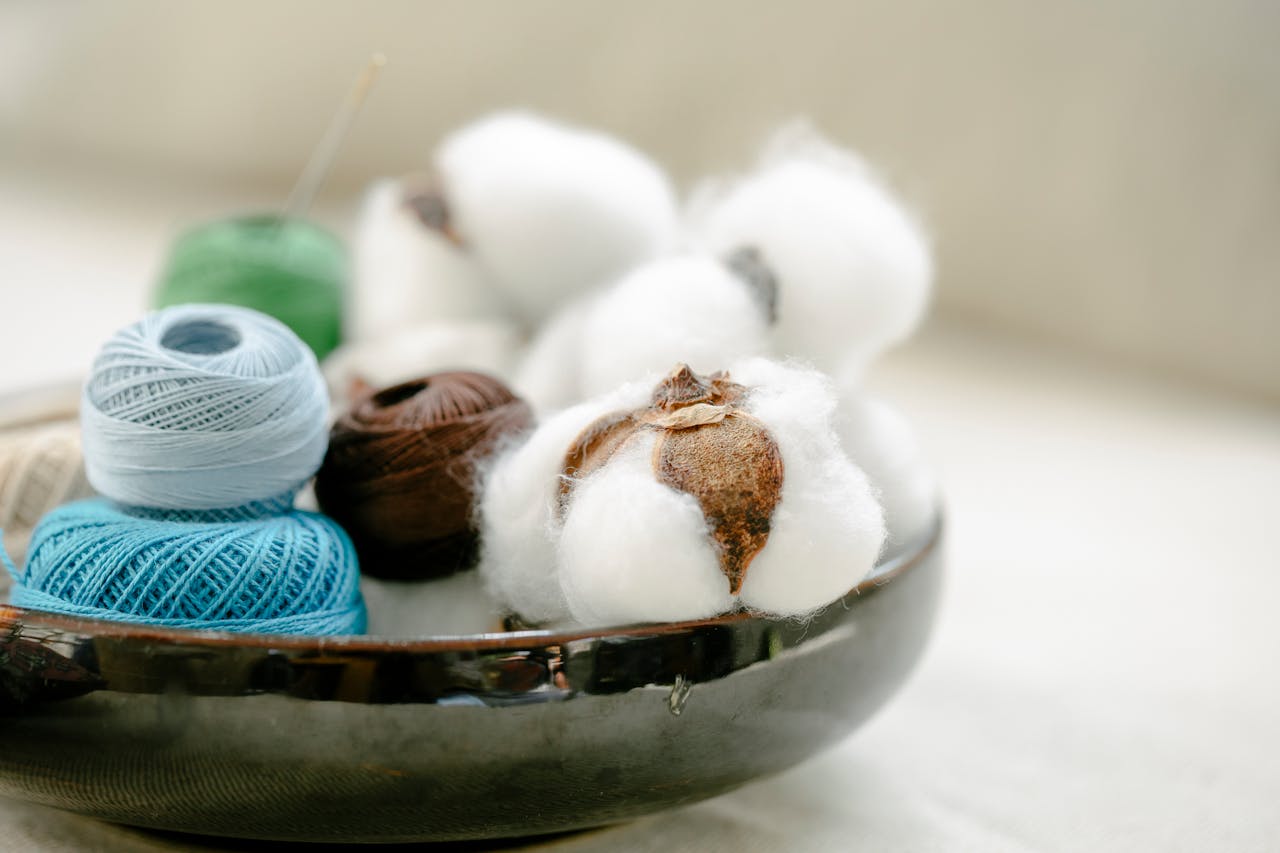Cotton Yarn: Benefits, Drawbacks, and Uses

Cotton yarn is one of the most popular and widely used fibers in the textile industry, known for its versatility and natural properties. This article explores the benefits and drawbacks of using cotton yarn, its various types, their specific purposes, and a comparison of the longevity of cotton fiber projects to wool projects.
Benefits of Using Cotton Yarn
- Breathability: Cotton yarn is highly breathable, making it an excellent choice for garments worn in warm climates. The natural fibers allow air to circulate, which helps keep the body cool.
- Softness: Cotton yarn is soft and gentle on the skin, making it ideal for clothing, baby items, and blankets. Its hypoallergenic properties are beneficial for those with sensitive skin or allergies.
- Absorbency: Cotton can absorb up to 27 times its weight in water, which makes it perfect for towels, dishcloths, and other items where absorbency is key.
- Versatility: Cotton yarn comes in various weights and textures, suitable for a wide range of projects from lightweight summer tops to sturdy home goods.
- Durability: High-quality cotton yarn is strong and durable, able to withstand repeated washing and wearing, which extends the life of the finished product.
Drawbacks of Using Cotton Yarn
- Shrinkage: Cotton tends to shrink when washed, which can be a drawback if the yarn is not pre-shrunk or properly cared for.
- Lack of Elasticity: Cotton yarn has little to no elasticity, which means it can stretch out of shape over time, particularly in garments.
- Weight: When wet, cotton becomes heavy and can lose its shape, which is not ideal for some types of clothing or accessories.
- Color Fading: Cotton yarn can fade over time with exposure to sunlight and frequent washing, affecting the vibrancy of the finished project.
Types of Cotton Yarn and Their Uses
- Mercerized Cotton: This type of cotton yarn has been treated with a chemical process that gives it a lustrous appearance and makes it stronger and more absorbent. It's ideal for projects that require a shiny finish, like decorative items and high-quality garments.
- Organic Cotton: Grown without synthetic pesticides or fertilizers, organic cotton yarn is an eco-friendly choice. It's perfect for baby clothes, sensitive skin items, and those looking to reduce their environmental impact.
- Egyptian Cotton: Known for its long fibers and high quality, Egyptian cotton yarn is luxurious and strong, making it suitable for fine garments and heirloom projects.
- Recycled Cotton: Made from reclaimed cotton fabric, this yarn is sustainable and often used for environmentally conscious projects.
- Pima Cotton: Similar to Egyptian cotton, Pima cotton is known for its softness and durability. It’s ideal for high-end garments and accessories.
Longevity of Cotton Fiber Projects vs. Wool Projects
The longevity of a project depends on the care, usage, and properties of the fiber used.
- Cotton Projects: Cotton is durable and can last a long time if properly cared for. However, due to its lack of elasticity, it may lose its shape and become less appealing over time. Items like dishcloths, towels, and summer garments tend to maintain their utility and appearance with proper care.
- Wool Projects: Wool fibers are naturally elastic, allowing them to retain their shape better over time. Wool is also more insulating than cotton, making it ideal for winter garments. With proper care, woolen items can last generations, but they require more delicate handling (e.g., hand washing and drying flat) to prevent felting and shrinkage.
In summary, cotton yarn offers numerous benefits such as breathability, softness, and versatility, making it ideal for a wide range of projects. However, it has some drawbacks, including shrinkage and lack of elasticity. Various types of cotton yarn cater to different needs, from luxurious garments to eco-friendly products. While cotton projects are durable, wool projects typically have greater longevity due to their elasticity and insulating properties.
Sign up for updates from Andrea Crochets and Knits and be the first to know about new patterns, tips, and cozy creations. Get inspiration for your next project—delivered right to your inbox!
References
White, Sarah E. "Pros and Cons of Knitting With Cotton". The Spruce Crafts, November 5, 2019. Web.
Stacey. "Choosing the Right Cotton Yarn for your Projects". Knit Picks, August 20, 2019. Web.
Smith, Alex. "6 Types Of Cotton Yarn". Crafts Bliss, May 6, 2022. Web.